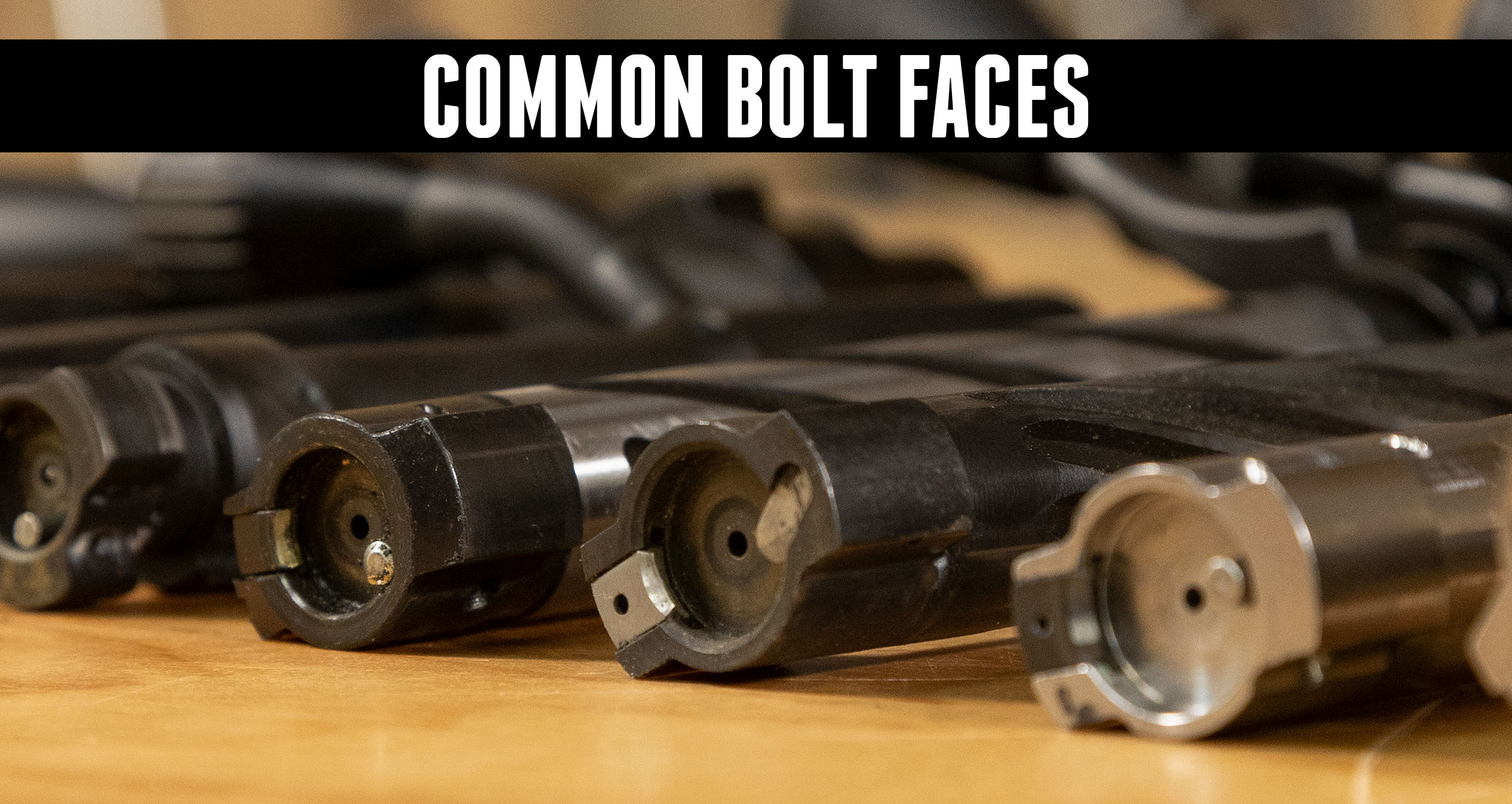The array of bolt faces and dimensions available can get overwhelming and confusing. Today, we’re clearing it up!
Disclaimer
Ultimate Reloader LLC / Making with Metal Disclaimer: (by reading this article and/or watching video content you accept these terms). The content on this website (including videos, articles, ammunition reloading data, technical articles, gunsmithing and other information) is for demonstration purposes only. Do not attempt any of the processes or procedures shown or described on this website. All gunsmithing procedures should be carried out by a qualified and licensed gunsmith at their own risk. Do not attempt to repair or modify any firearms based on information on this website. Ultimate Reloader, LLC and Making With Metal can not be held liable for property or personal damage due to viewers/readers of this website performing activities, procedures, techniques, or practices described in whole or part on this website. By accepting these terms, you agree that you alone are solely responsible for your own safety and property as it pertains to activities, procedures, techniques, or practices described in whole or part on this website.
SAAMI
SAAMI, the Sporting Arms and Ammunition Manufacturers’ Institute, publishes cartridge and chamber specifications. This is crucial to reloading and rifle building. The ammunition needs to be smaller than the chamber and the case rim needs to be smaller than the bolt face.
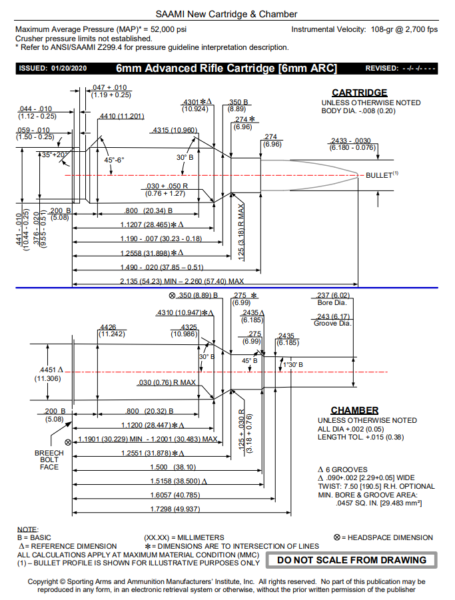
The cartridge specifications give the base to datum, case rim diameter, OAL, shoulder angle, and more on a diagram. A chamber diagram is also given with the “breech diameter” or bolt face diameter. It’s especially helpful to always have SAAMI specs for the caliber you are reloading for or working with on hand. These are available on saami.org.
Bolt Face Clearance
The bolt face always needs to be larger in diameter than the case rim maximum. You can have a larger bolt face, but it’s important to be aware of extraction claw engagement. The bolt face doesn’t contribute to supporting the case like the chamber wall does. This is because the web and rim of the case are so strong that this part of the case doesn’t need to be squeezed in from it’s circumference. Clearance affects both extraction and ejection. Smaller rounds are not a problem, but you may find it difficult to extract them.
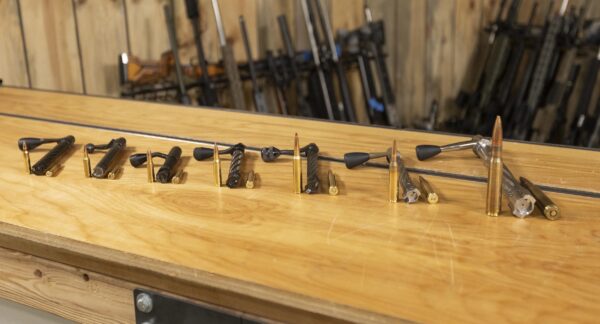
At Ultimate Reloader, we have a number of different bolt faces. While I looked for a chart with the relevant diameters, I didn’t find one online, so I made my own documenting case rim minimum, case rim maximum, and bolt face measurements. SAAMI typically gives a case rim value with a -0.010” tolerance, so I did the math and wrote it all out. I included the 22 Hornet and 375 Cheytac even though I don’t currently have them at Ultimate Reloader.
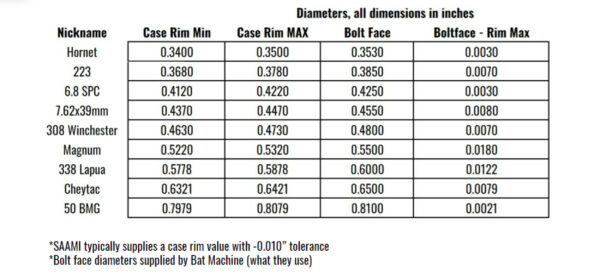
Using bolt face diameters from BAT machine, I subtracted the maximum case rim diameter from the bolt face diameter to get the worst case clearance you’d expect to see. Keep in mind that every bolt manufacturer chooses a bolt face diameter. They may not be the same, so this chart is not one size fits all. Another confusing thing is that rifle manufacturers may sometimes list the maximum case rim diameter as the bolt face diameter. This isn’t actually accurate, as it would leave zero clearance. While there is a range, reference the chart and make sure your bolt face has some tolerance in it!
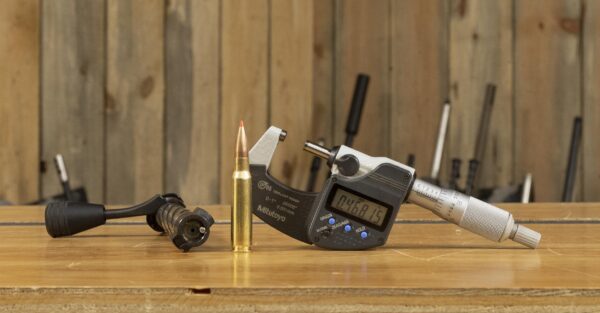
There are some special cases you may also encounter. Some classes of bolt faces are slightly enlarged to account for an odd cartridge case rim that falls in the same range. BAT Machine’s 0.0180 bolt clearance for the magnum bolt face is one of these cases.
Taking a closer look at the 50 BMG with a build coming up, my build will have greater than 0.0021 clearance. I determined this by measuring the case rim of my mil-surp 50 BMG ammunition.
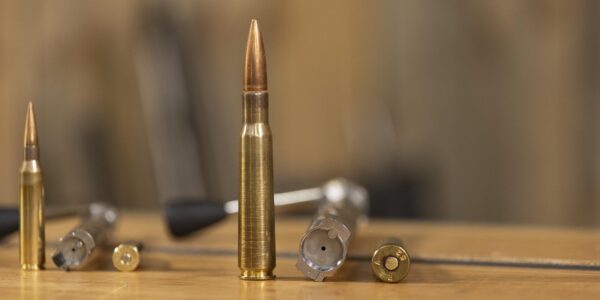
This chart features only common, centerfire, rimless bolt faces. There are also rimmed cartridges like the 30-30 and a slew of obscure cartridges with unique bolt faces not shown here.
Conclusion
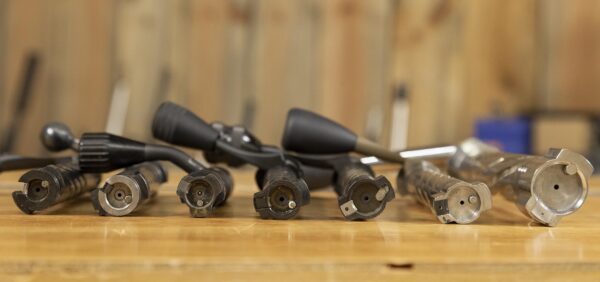
There are several things to remember. Always measure your case rims. They should follow SAAMI specifications, but don’t always. Also watch out for damaged case rims which can lead to feeding and other issues. Oversize bolt faces are fine as long as extraction claw engagement isn’t compromised. The rich history and diversity of reloading dies, firearms and ammunition means that everything has a tolerance and a range. Bolt faces will also vary by manufacturer.
Don’t miss out on Ultimate Reloader updates, make sure you’re subscribed!
Thanks,
Gavin Gear
